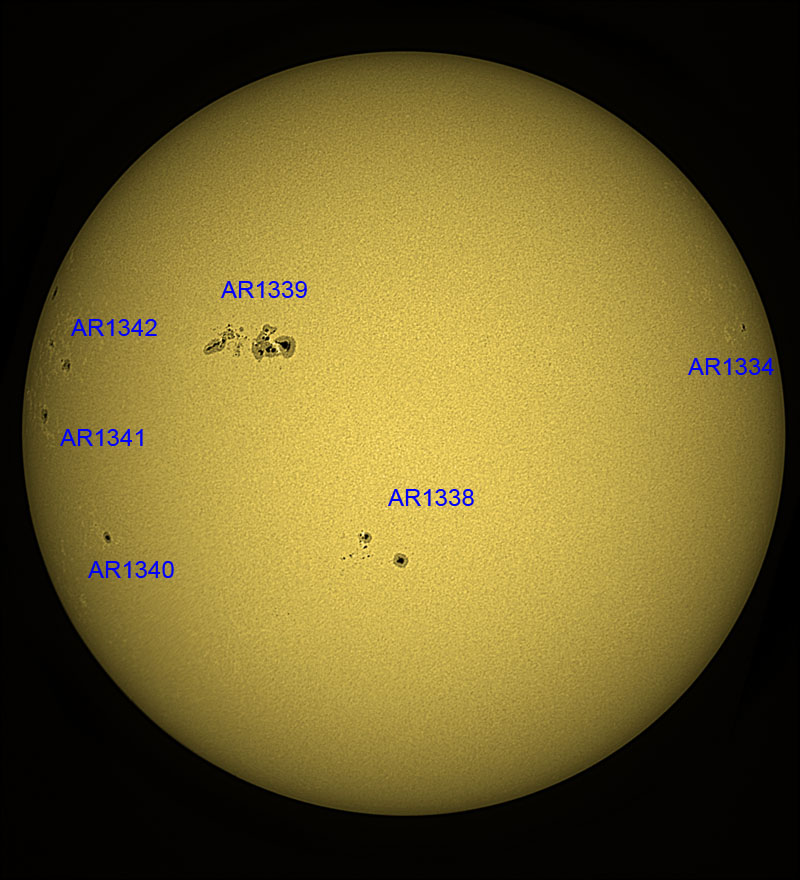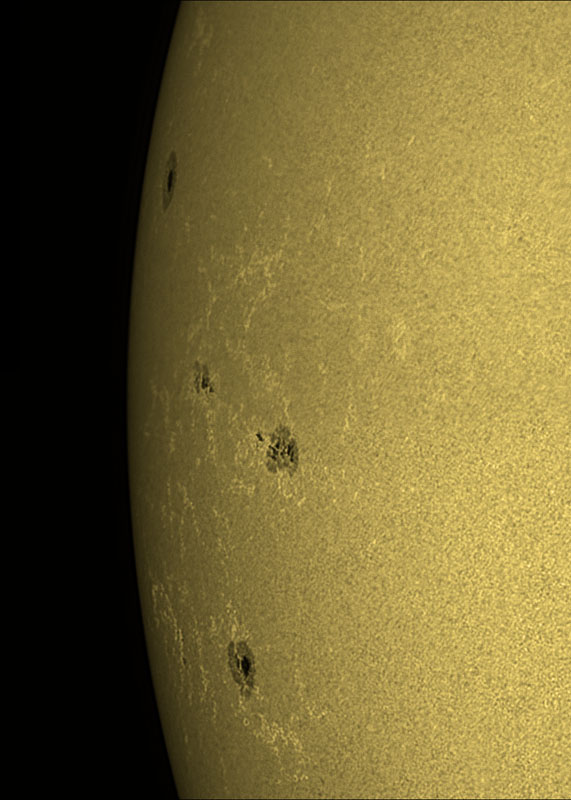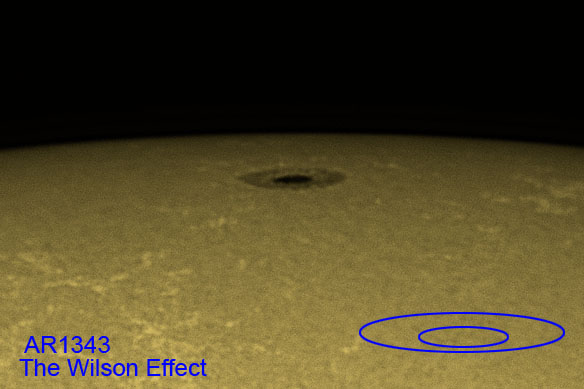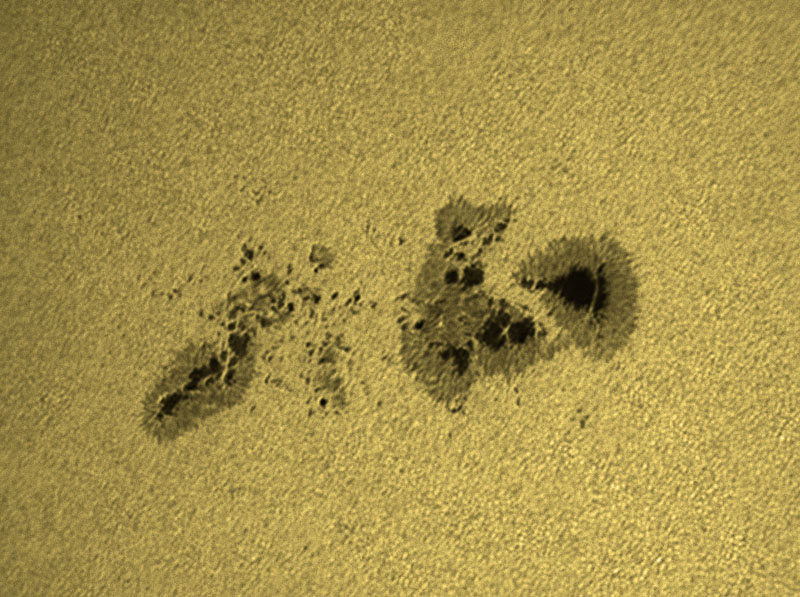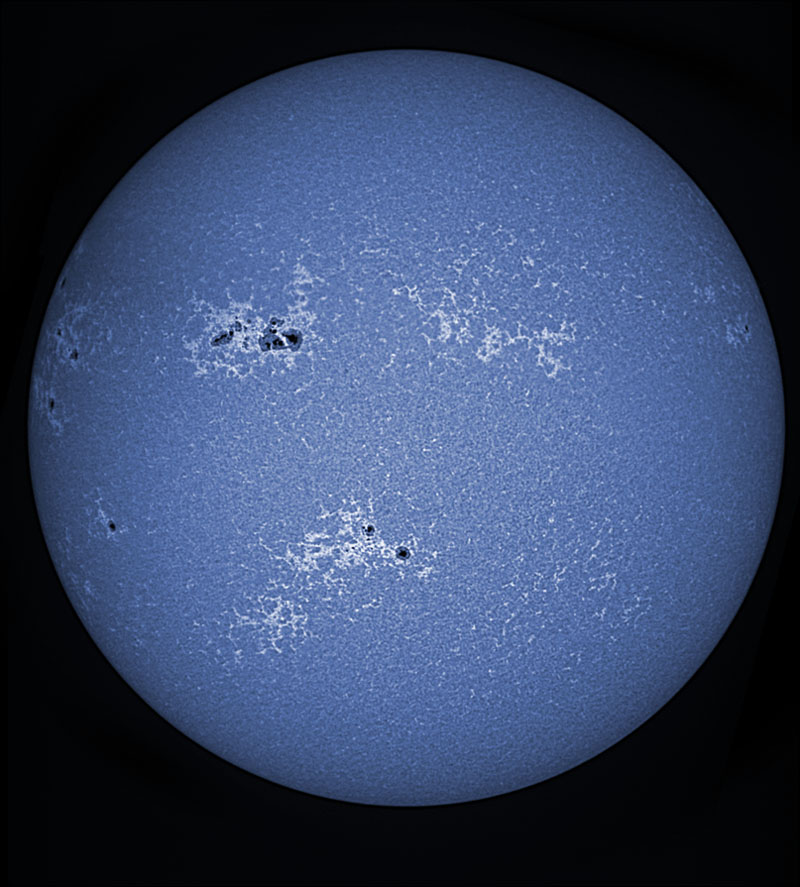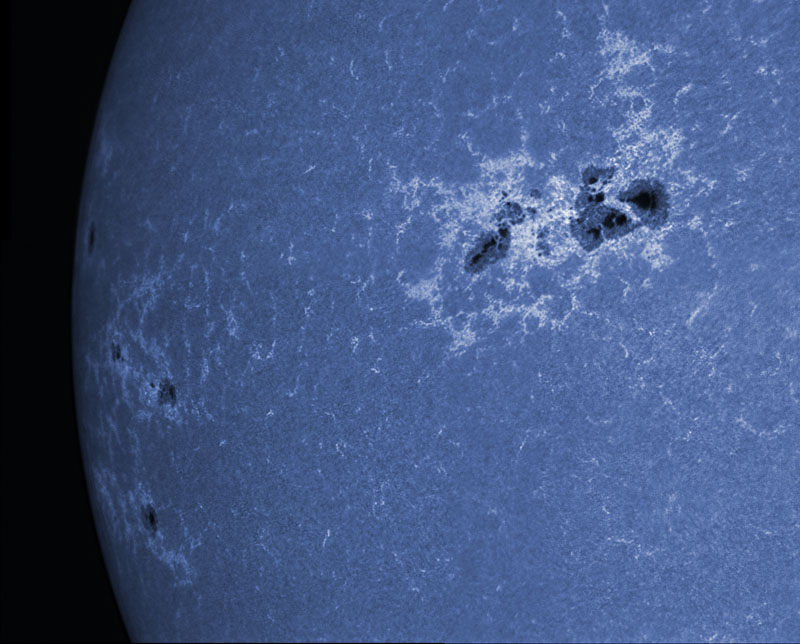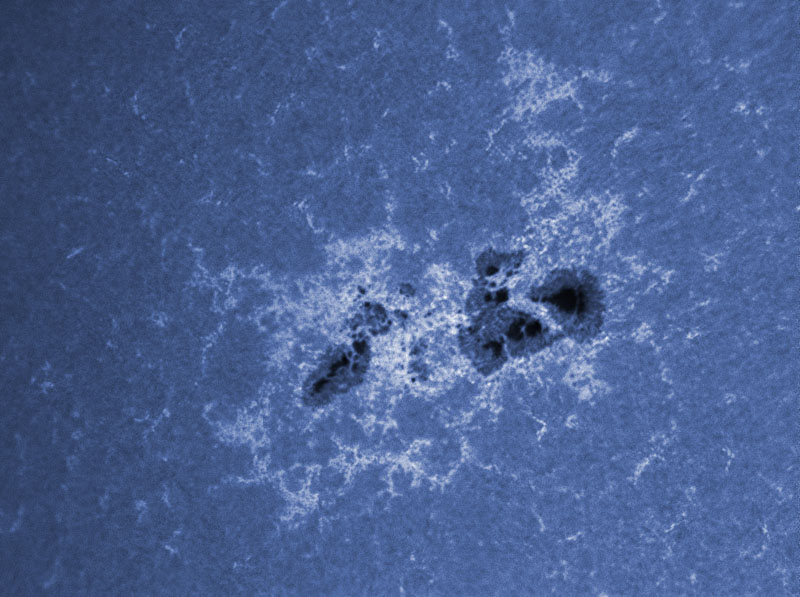Sun in HAlpha / CaK / White Light With Coronado 40 / Stellarvue SV80s + Lunt CaK filter or Baader Astro Solar Safety film Uploaded 11/11/11 Weekly Report
Images below are 800 wide and non clickable
Only once in a great while do we get to witness the rise and fall of a giant sunspot, from its first appearance on the limb to its trek across the Suns face and it falling apart slowly over the next few weeks to a month. AR1339 is now heading towards the meridian, and soon will traverse the center of the Suns disk where any flares it produces may push enough high energy particles towards the Earth and an Aurora may result. We shall see!
WHITE LIGHT:
Lets start with the key image for the weekend showing the changing appearance of AR1339. While AR1334 moves over the edge, we now have several new small spot groups coming onto the limb on the left, surrounded by a large amount of photospheric faculae.
Here is a closer view with the 5x Barlow and Stellarvue of the western limb. Something is amiss with that small round spot on the upper left - it exhibits the "Wilson Effect". Lets look closer...
Seen on the limb, a sunspot can have the appearance of a sunken umbra - the central dark region. But we know that sunspots are essentially flat, so how can this be?
Here I've rotated the image to see this effect more clearly and put a graphic in to show the effect. This illusion is caused by changes in the transparency of the penumbra, rather than a sunken umbra. It can also be caused by a spot that is not really round, and the umbra is closer to us than the center of the penumbra.
5x Barlow close up of the monstrous sunspot AR1339. This is when the sunspot was at its peak and you can see plenty of light bridges inside, usually indications of an imminent break up. The granulation is well seen in this image as well.
AR1338 (below) is a fine isolated pair, with great symmetry, and a horde of small pores (sunspots without umbras) surrounding them. The filaments surrounding the umbras in the penumbra are just as difficult to image as granulation! Both average around 2 arcseconds in width, right at the diffraction limit for this small instrument.
The full disk (below) in Calcium K wavelength. The sun is always rich with very fine detail in CaK. The white regions forming small circles and rings in the faculae, which are surround the outer edges of the so called "Super Granulation" which is best seen at this wavelength.
AR1339 ( below) is stunning in CaK. This two part lower magnification image also shows a very nice spot group coming onto the limb on the left. Seeing was not so sharp at this wavelength! The farther you get in to the UV end of the spectrum, the seeing and steadiness decreases dramatically. Alternately, it is best in red wavelengths such as Halpha.
AR1339 ( below) in CaK with the 5x Televue Powermate. What a monstrous sunspot! Although not quite as sharp as the G band white light image, the extensive detail in the faculae - the white areas around the spot are priceless.
AR1339 to the limb in H-alpha wavelengths. (deep red) This huge spot group has a very different appearance in H alpha. It is flaring a bit here, the white areas are the small C class flares. On the limb we can see some filaments, which are prominences viewed against the solar disk. The seeing had really gotten bad by now, but at least we can see something.
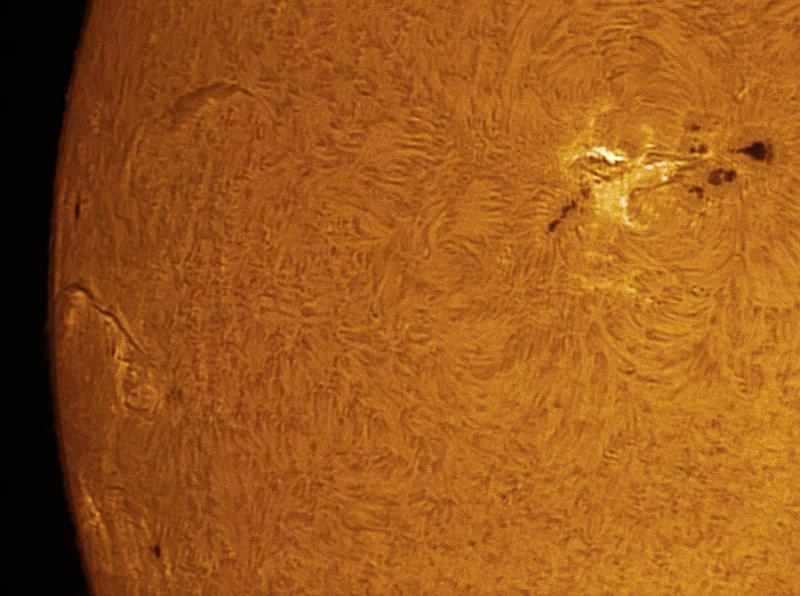
Here is a shot inside the observatory while imaging the Sun. The roof is rolled back, and the Astrophysics 1200 mount carries a equipment mounting board with the SV80s on the left imaging the sun in the Green band, a 6" Schmidt Newtonian in the center, and some counterweights on the right.
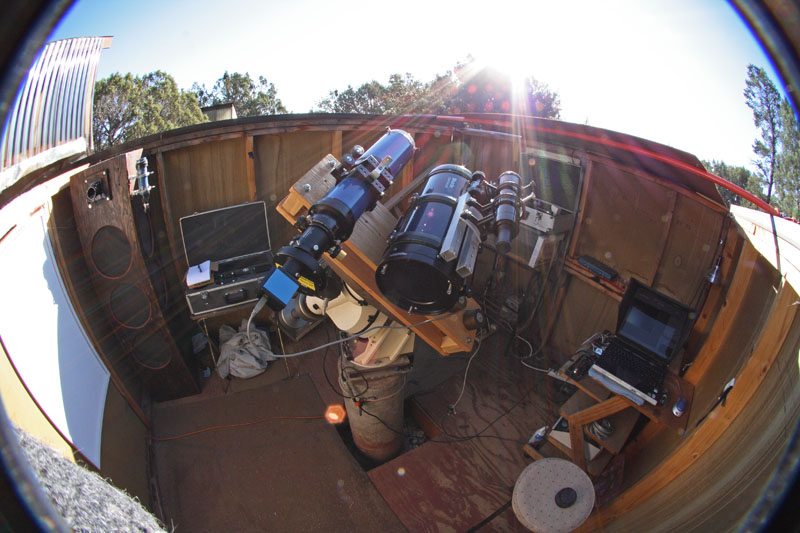
Instrument: Coronado 40mm Halpha or SV80 Platform: Astrophysics 1200 Camera: DMK 3U (1024x768) Location: Payson, Arizona Elevation: 5150 ft. Sky: Seeing 6/10, Transparency 9/10 Outside Temperature: 55F Processing: Registax 6, Photoshop CS2 Solar Home Page HOME SCHMIDT GALAXIES EMISSION NEBS REFLECTION NEBS COMETS GLOBULARS OPEN CLUST PLANETARIES LINKS
